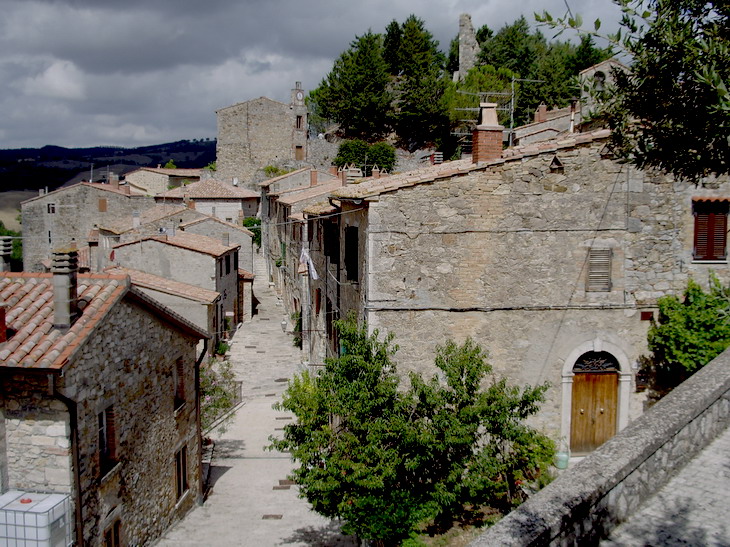The locality, already mentioned with the name of Rocchetta before the year one thousand, became a possession of the Aldobrandeschi family in the XIII century and, at the end of the century, it passed under the control of Fazio Cacciaconti, son of the lord of Trequanda, who gave it the current denomination. During the fourteenth century, the place was first conquered by the Basques of Orvieto and then by the Orsini of Pitigliano, becoming part of the homonymous county for a short period of time.
During the fifteenth century the center was conquered by Siena, following its fate until the fall of the Republic in the mid-sixteenth century. Since then, the town underwent a very long period of decline, despite having become part of the Grand Duchy of Tuscany.
In the second half of the 20th century a series of restorations for the recovery of the historic center began, which ended in 1998 with the remaking of the pavement in most of the village.
<strong>Monuments and places of interest</strong>
<strong>Pieve di Santa Cristina,</strong> currently deconsecrated, was built during the XIII century near the castle. Above the entrance door is a <strong>Templar cross</strong>.
<strong>Church of Santa Maria</strong>, also dedicated to Consolation, was built during the 16th century.
<strong>Palazzo dell’Ospedaletto</strong>, a medieval building which according to some studies may have been the <strong>outpost of the Order of the Templars</strong> in the province of Grosseto, a hypothesis supported by the Templar cross, by the Agnus Gods and the effigy of Baphomet present on the walls.
<strong>Aldobrandesco castle</strong>, a complex surrounded by a wall with a medieval gateway, which includes a series of buildings including the Palazzo di Giustizia and the Palazzo Pretorio (the latter housed the old town hall ).
<strong>Walls of Rocchette di Fazio</strong>, built during the 13th century to defend the primitive settlement located in the upper part, completely delimit the complex of the Aldobrandesco castle, thanks to a curtain wall with a hexagonal perimeter.



